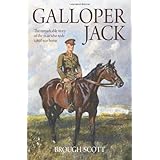Lieutenant Robert Hampton Gray
received the Victoria Cross for his heroics near the end of World War II. Lt.
Gray was a British Columbian, a Canadian serving with the Royal Navy’s Fleet
Air Arm. Killed in action on August 7th, 1945, he is memorialized by
a monument in Japan—the only monument on Japanese soil dedicated to a wartime
enemy. Gray displayed amazing heroism and skill throughout the war, and was
decorated for action against the Tirpitz and the Japanese, even before his last
battle.
By sheer happenstance I met Ian
Herring, a documentary-maker who happens to be Hampton Gray’s cousin. He produced a
documentary/drama entitled “The Last Battle of Hampton Gray” which I found
fascinating. I interviewed Ian, and broke his responses into two sections, the
first of which follows:
1. How long have you been making
documentaries?
Since 1990.
2. Was “The Last Battle of
Hampton Gray” your first, or was that a subject you decided on after you had
others under your belt?
I turned my attention to a documentary on Hampton around 2004. I pitched it to History Television and was
surprised at the positive reception.
Canadians tend not to celebrate stories of individual Canadians who
stand out – especially during war.
Our initial approach was to do a factual biography charting Hampton’s
rise within the service - the stand out work he did during missions and the all
or nothing ending to the his life and WW2.
I thought we had a good hook in that he was Hampton was the last
Canadian to die in active service during WW 2 and the last VC recipient in
Canada. Turns out it wasn’t quite
enough.
Our commissioning editor at History Television felt the topic was
perfect as an anniversary special for the end of WW2. But she did not think a traditional
biography telling Hampton’s story would be enough. She suggested we do it as a POV film through
my eyes – a personal recounting of Hampton as a cousin.
I initially resisted that approach because I did not personally know
Hampton. The only connection I had was
through his mother who would share press clippings and try to get me interested
in his story – which as a young child, I found fascinating. So how could I tell the story without really
knowing him or personally meeting him?
We were able to agree that this could be a personal journey of me
getting to know my cousin by retracing his steps through the war. In this case I could focus on the impact he
had on family, friends and the survivors who witnessed the final mission.
3. I seem to recall that Hampton
Gray’s story, in a very abbreviated fashion, was taught in school at some point
in BC. Can you tell me anything about that?
That was before my time. My
experience of the Hampton story is through family. I knew his mother and she would share
stories, press clippings and try to convey his story.
4. The Japanese memorial to your
cousin is very unique, being the only memorial to an enemy fighter in Japan.
What is the most significant point regarding that, in your mind?
Clearly it’s the bringing together of former enemies – and their families. His sister Phyillis Gautschi, neice Anne
George and other family members were able to connect with the residents in the
town of Onagawa – and those responsible for the memorial and its purpose. (Onagawa is the closest residential area to
the scene of the battle and it’s here where the memorial has been
erected.) I have very nice memories
from my brief visit to Onagawa.
Canadian and Japanese governments and naval military services support
the memorial. It’s a fine example
of reconciliation.
























.JPG)
.JPG)
.JPG)